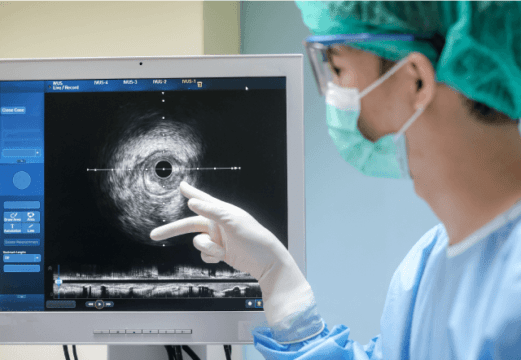Severe calcified aortic stenosis is a common condition that can currently be effectively treated with SAVR or TAVR. However, some patients, given comorbidities or anatomical characteristics, are not good candidates for these therapeutic alternatives.

The non-invasive ultrasound therapy (NIUT) has surged as viable alternative. It claims ultrasound might act on calcified valves, and mobilize tissue by softening it.
The study included 40 patients with symptomatic calcified severe aortic stenosis that were no good candidates for surgical or transcatheter aortic valve replacement. Patients were treated with ultrasound using Valvosoft from Cardiawave, based in Levallois-Perret, France.
Read also: Low Gradient, Normal Flow Aortic Stenosis: Changes in Quality of Life with TAVR.
Primary end point was procedure related mortality at 30 days. Mean age was 83, with equal distribution of men and women. 10 were diabetic, 32 hypertensive, 6 had COPD, 16 kidney function deterioration, 18 coronary artery disease and 7 prior MI.
STS risk score was 5.6%. Cardiac assessment revealed 53% ejection fraction, aortic valve area 0.57 cm2, mean gradient 41.9 mmHg, and two patients had bicuspid valve. One procedure was done under general anesthesia, while the rest were sedated.
No patient showed the primary end point and there were no complications at 30 days except for a transient desaturation during one procedure.
Read also: Is AS Only Important When Severe?
After 6 months, survival rate resulted 72.5%, with no incidence of cerebrovascular events or changes in cognitive tests. Also, most patients saw improved functional class and quality of life. Eco-Doppler revealed an increase in valve area (0.58 cm2 vs. 0.64 cm2, p=0.0088) and a reduction in mean gradient (41.9 mmHg vs. 38.8 mmHg, p=0.024).
Conclusion
This novel ultrasound technique to treat severe calcified aortic stenosis has been shown feasible and effective.

Dr. Carlos Fava.
Member of the Editorial Board of SOLACI.org.
Original Title: Treatment of severe symptomatic aortic valve stenosis using non-invasive ultrasound therapy: a cohort study.
Reference: Emmanuel Messas, et al. www.thelancet.com Published online November 13, 2023 https://doi.org/10.1016/S0140-6736(23)01518-0.
Subscribe to our weekly newsletter
Get the latest scientific articles on interventional cardiology





